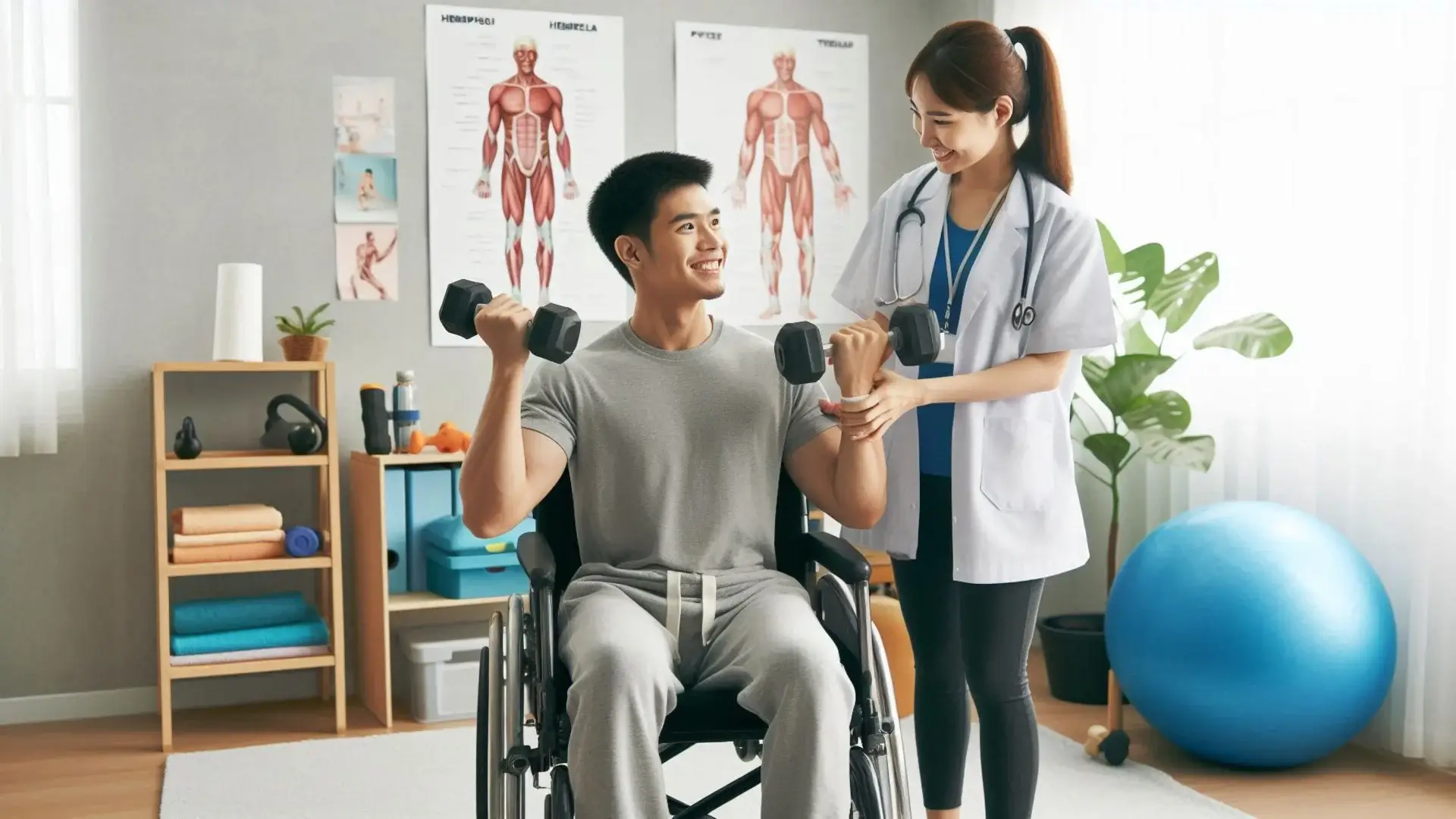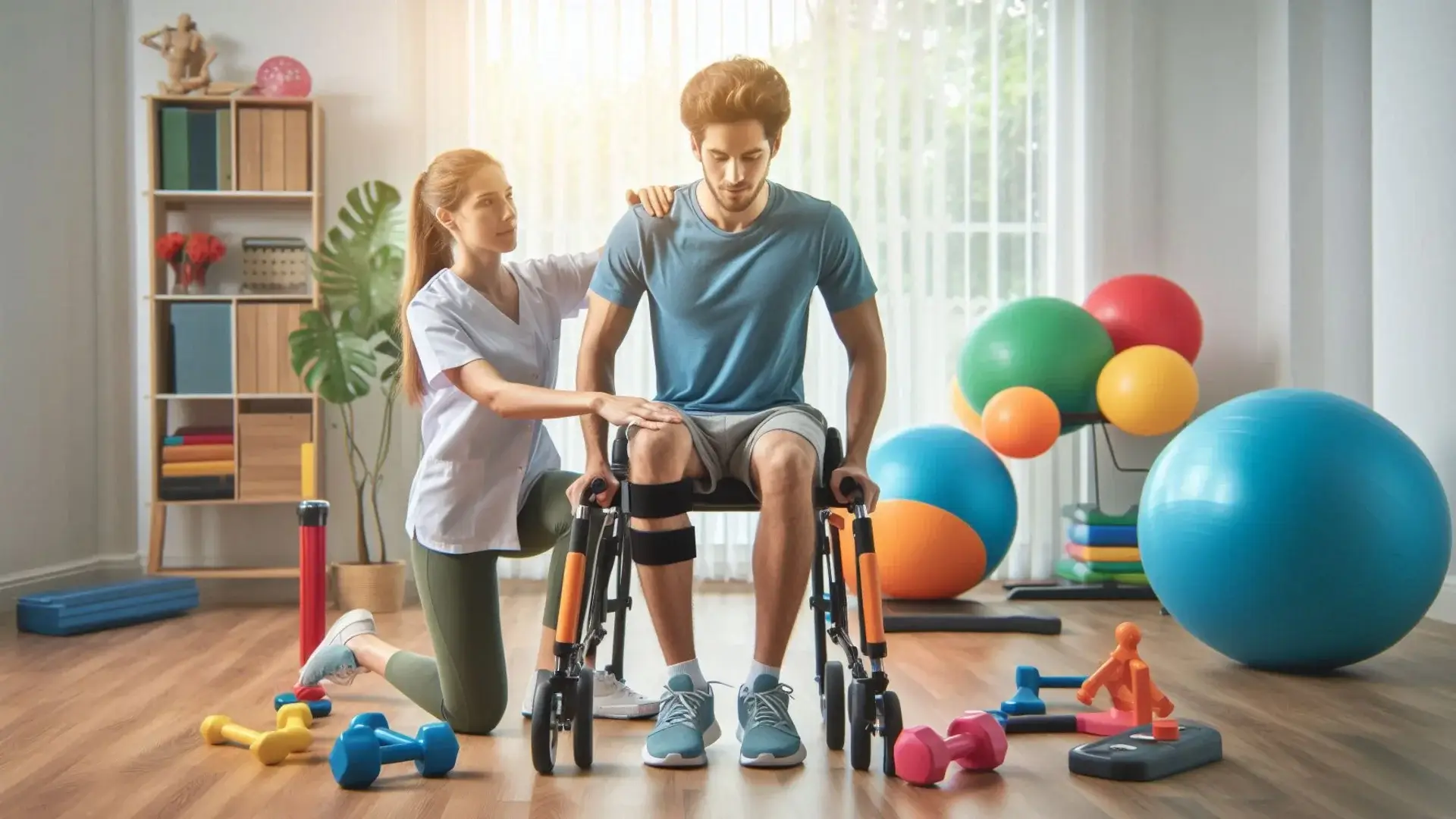
Effective Physiotherapy Treatments for Hemiplegia Recovery
Imagine regaining strength and mobility after a stroke or brain injury that left you with hemiplegia, a condition characterized by one-sided paralysis. Physiotherapy plays a pivotal role in this transformative journey, offering hope and improved quality of life through tailored treatment plans. At Push Pounds, our team of registered physiotherapists, certified athletic therapists, and registered massage therapists are equipped with advanced certifications, including Strength and Conditioning Specialist (CSCS) credentials, to guide you through each step of your rehabilitation.
Our approach isn’t just about managing symptoms; it’s about fostering recovery in individuals of all ages, from all walks of life, including national and international athletes and performers. By working collaboratively with an extensive network of sports medicine doctors, hand specialists, and surgeons, we ensure a comprehensive treatment strategy that addresses your specific needs. Whether you’re looking to regain basic functionalities or aiming for high-level athletic performance, our specialized focus on hand and upper extremity injuries positions us uniquely to support your goals.
Understanding Hemiplegia
Hemiplegia affects your body’s ability to move, typically impacting one side. This condition often results from significant brain injuries or strokes, making rehabilitation critical.
Definition and Causes
Hemiplegia is a form of paralysis that affects one side of your body, commonly caused by brain injuries like strokes or trauma. When an incident occurs, the brain’s motor control areas suffer damage, disrupting the signals that manage muscle control and strength. Brain injuries leading to hemiplegia can result from various causes, including cerebral hemorrhages, infections such as meningitis, and severe head traumas. Disorders that cause congenital disabilities, like cerebral palsy, might also lead to hemiplegia.
Impact on Movement and Daily Life
When hemiplegia occurs, you might experience significant challenges in performing everyday tasks. Simple activities such as walking, picking up objects, or even dressing become laborious and demanding. Muscle stiffness and reduced coordination on the affected side further complicate mobility and daily routines. This condition can also lead to secondary health issues, including muscle atrophy and joint deformities, intensifying the need for comprehensive rehabilitation to prevent long-term disability. Additionally, the psychological impact, including potential social isolation and frustration, can affect your quality of life, necessitating psychological as well as physical support.
Key Principles of Physiotherapy for Hemiplegia
Physiotherapy plays a critical role in managing hemiplegia by enhancing physical capabilities and improving the quality of daily activities.
Initial Assessment and Individualized Treatment Plans
Initial assessment in physiotherapy determines the specific needs and functional deficits of each patient with hemiplegia. This evaluation typically includes assessing muscle strength, range of motion, sensory perception, and coordination abilities. Based on the findings, a physiotherapist develops a tailored treatment plan. Your plan may focus on areas such as improving gait, enhancing arm-hand activities, and strengthening weakened muscle groups. Treatment plans are dynamic, adjusting to progress and setbacks in recovery, ensuring optimal support throughout the rehabilitation process.
Role of Physiotherapy in Functional Recovery
Physiotherapy aims to restore as much independence as possible in individuals with hemiplegia. Techniques like strength training, joint mobilizations, and neuromuscular re-education are utilized to address physical impairments. Additionally, task-specific training integrates activities such as walking or dressing that can be particularly challenging. Beyond physical recovery, physiotherapy also supports psychological well-being, helping patients overcome barriers to social engagement and reducing feelings of isolation. Implementing consistent, targeted physiotherapy interventions plays a decisive role in achieving functional recovery and enhancing life quality.

Core Physiotherapy Techniques Used in Hemiplegia Treatment
Physiotherapy plays a pivotal role in managing hemiplegia to improve mobility and enhance the quality of life. Here, you’ll learn about the specific techniques used to tackle the symptoms of hemiplegia.
Strengthening Exercises
Strengthening exercises form a fundamental component of hemiplegia treatment. These exercises target weakened muscles on the affected side of the body. Regular practice leads to improved muscle tone and strength, which helps in performing daily activities more effectively. For example, weight-bearing exercises such as leg presses or the use of resistance bands can gradually rebuild muscle strength.
Balance and Coordination Training
Improving balance and coordination is critical for individuals suffering from hemiplegia. Physiotherapists focus on exercises that enhance both static and dynamic balance capabilities. Techniques might include activities like standing on one leg, walking along a straight line, or using balance boards. These activities not only improve balance but also aid in regaining coordination between the affected and unaffected sides, facilitating smoother and more coordinated movements.
Mobility Aids and Assistive Devices
For some individuals with hemiplegia, mobility aids and assistive devices are essential to maintain independence in movement. Depending on your specific needs, devices such as walkers, canes, or ankle braces might be recommended. These aids provide support and stability, reducing the risk of falls and enabling safer, more confident mobility. Physiotherapists ensure that each device is appropriately suited to your capabilities and daily environment, optimizing functionality and comfort.
Advanced Therapies in Physiotherapy for Hemiplegia
The field of physiotherapy constantly evolves, incorporating advanced treatments to enhance recovery in hemiplegia patients. These therapies aim to restore functionality and improve quality of life through cutting-edge technology and methods.
Neuromuscular Electrical Stimulation (NMES)
Neuromuscular Electrical Stimulation, or NMES, plays a pivotal role in the rehabilitation of hemiplegia. This therapy involves the use of electrical currents to stimulate the affected muscles, promoting muscle activation and preventing atrophy. By applying NMES, you can expect an improvement in muscle strength and coordination, which are critical for daily activities. Typically, NMES is integrated into your therapy sessions in which electrodes attach to the skin over the targeted muscles. The electrical impulses mimic the action potentials from the central nervous system, causing the muscles to contract. Regular sessions contribute to muscle re-education, enhance limb stability, and can help improve involuntary motor functions if you have been affected by stroke or other brain injuries.
Robotics and Virtual Reality Therapy
Robotics and Virtual Reality (VR) therapy represent transformative approaches to physiotherapy for individuals with hemiplegia. Robotics therapy involves the use of robotic devices that assist in performing movements, providing consistent support and resistance. These robots help in guiding the limbs through the desired movements, enabling repetitive practice essential for neuroplasticity and functional improvement. As an example, robotic gloves and arm supports can assist in tasks like gripping or reaching, gradually improving your capability to perform such tasks independently.
Virtual Reality therapy utilizes immersive, simulation-based environments where you can practice movements in a controlled yet realistic setting. Engaging in VR therapy, you interact with various virtual objects and scenarios, which not only aids in physical therapy but also provides cognitive challenges. These exercises are designed to improve motor skills, balance, and coordination, while also making the rehabilitation process more enjoyable and engaging. Whether you’re navigating virtual obstacle courses or mimicking daily tasks in a simulated environment, VR therapy effectively complearts on therapeutic outcomes and fosters an active participation in your recovery process.
Patient and Caregiver Education
As you navigate the journey of recovery from hemiplegia it’s essential to remain informed and proactive. Understanding the array of physiotherapy options available can empower you and your caregivers to make informed decisions tailored to your specific needs. Embrace the advanced technologies and therapies that have been shown to significantly aid in improving your mobility and overall quality of life. Remember recovery is a collaborative and dynamic process where your active participation is key. Stay engaged set realistic goals and work consistently with your healthcare team to optimize your rehabilitation outcomes.

